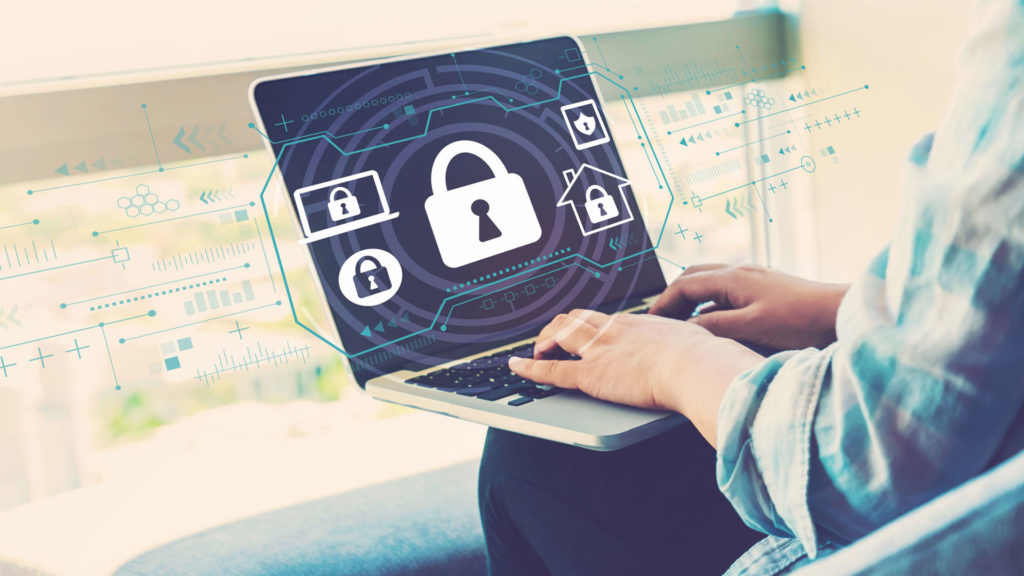5 endpoint security tips for the modern workforce

With cyber-attacks constantly evolving and increasing in sophistication, SMB’s need to make sure their workforce is protected from the ground up. Hybrid work is also now the norm in New Zealand, making the attack surface bigger. By increasing cyber security across your device fleet, you can empower your employees to work from anywhere while keeping them protected outside the business firewall.
Below are 5 modern endpoint security tips from Stephen O’Leary, Head of Technical Services at Ricoh.
1. Leverage built-in device cyber protection
More and more SMBs are implementing remote or hybrid workplaces which means there’s an increasing number of devices outside the corporate firewall. In a study by Ponemon Institute, 68% of respondents say the frequency of attacks has increased1 and they have experienced one or more successful endpoint attacks in the past two years. As a first line of defence, your endpoints need to be secure by design.
When devices are being used at home, they’re no longer protected by corporate governance. As well as being outside the firewall, you also don’t know what they’re being used for. Brands such as HP reinforce their devices with multi-layered security that’s designed for modern workforce security challenges.
What to look for in endpoint security:
- Always-on, always watching hardware-enforced protection.
- Multi-layered security below, in, and above the operating system (OS).
- Security software reduces the attack surface and allows remote recovery from attacks.
- Self-healing firmware.
- In-memory breach detection to fortify your first line of defence.
Other features that are becoming more and more popular include face recognition that eliminates password access and increasing use of AI.
2. Set up for success with automatic configuration
Delivering work-ready, secure devices to employees wherever they are is a big pain point for a lot of IT teams. With automatic device configuration using a program such as Windows Autopilot, all users need to do is connect to a network and verify their credentials. Through our partnership with HP, we can send devices straight to users. Then all they need is an internet connection to securely and automatically configure device settings and load business applications.
3. Adopt a Zero Trust framework
Digital environments are more complex than ever which requires a framework designed for hybrid work and modern threats. A Zero Trust cyber security model is where you don’t automatically trust anything without verification. The basic premise is that data points (such as identity, location, and behaviour) are used to authenticate a device, user access is limited to the areas of the network they require, and any anomalies are automatically considered a threat.
Once a device is set up, we use a Zero Trust model to establish a strong foundation for protecting businesses against the main attack vectors such as identity theft, phishing emails, and domain deception. This model helps keep cyber criminals out and minimise the blast radius if there is a breach.
4. DNS protection
DNS (Domain Name System) protection is an additional security layer that blacklists dangerous sites and filters out unwanted content. This is particularly important in the era of hybrid work because it serves as a layer of protection between an employee and the internet.
DNS security provides protection against threats such as:
- Employees visiting malicious websites
- Malware and phishing attacks
- Botnet activity
- Typos that lead to incorrect domains
5. End user training
When it comes to cyber security, it’s not just about software and hardware. Human error plays a big role too. 60% of organisations have had one compromised employee infect other users2. End user training is your last line of defence—you can think of it as a human firewall. At Ricoh, we provide AI-driven phishing simulations that use local New Zealand content to make it as realistic as possible. Educating employees so that they know what to look out for provides additional protection, particularly for those who are working outside of the corporate firewall.
Cyber security is an ongoing journey. The digital world is fast-moving and cyber attackers never stop. They’re continually evolving their strategies and combining different techniques to find weaknesses. To counteract these threats, your business needs to continually evolve its cyber defences. As we’ve seen in recent New Zealand business breaches in the news, the consequences can be devastating—from reputation damage to significant financial and asset loss. Make sure all your bases are covered now and into the future.
Is your defence airtight? Let us strengthen your cyber security for the modern world. Book a security assessment to evaluate your current risks and build a roadmap to protection.
1. Ponemon Institute 2020 State of Endpoint Security Report sponsored by Morphisec, January 2020
2. Mimecast The State of Email Security 2020, June 2020
